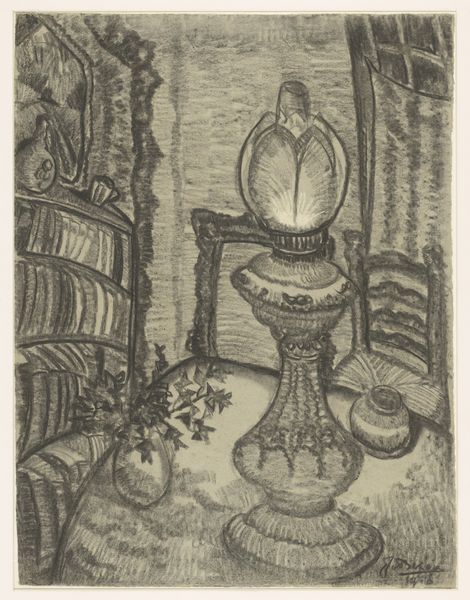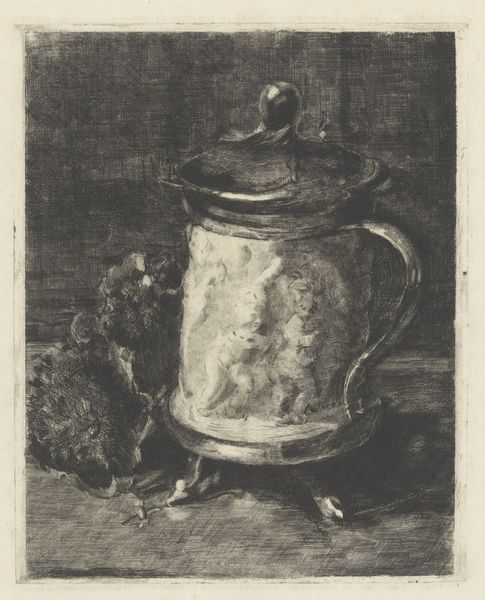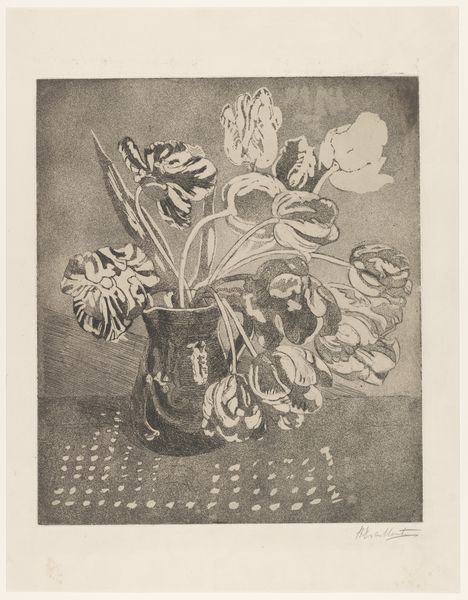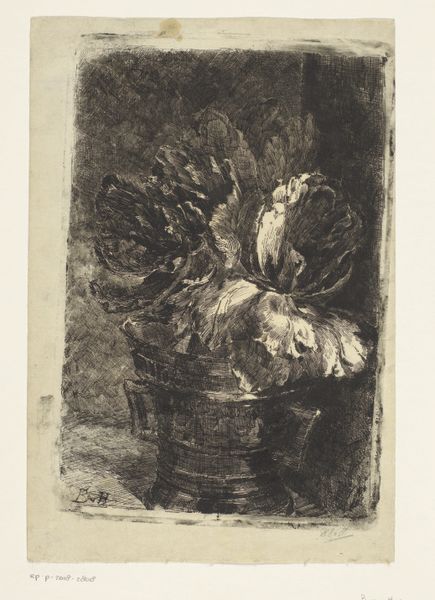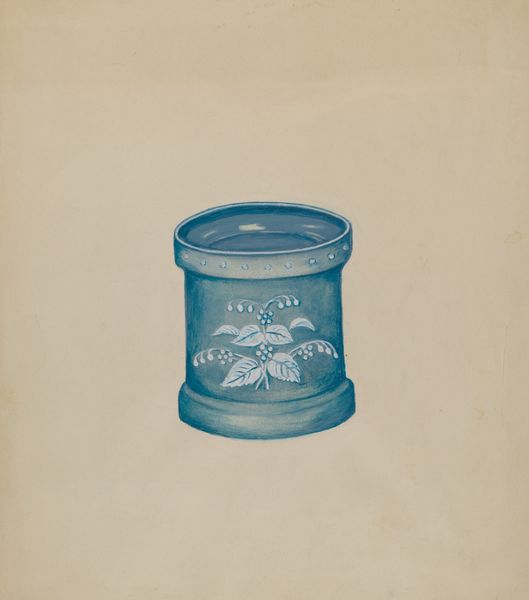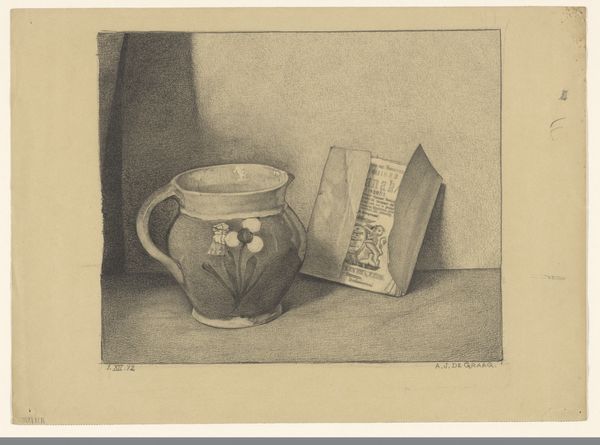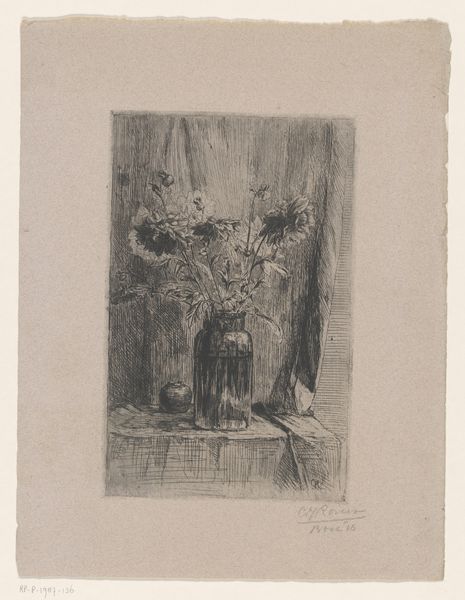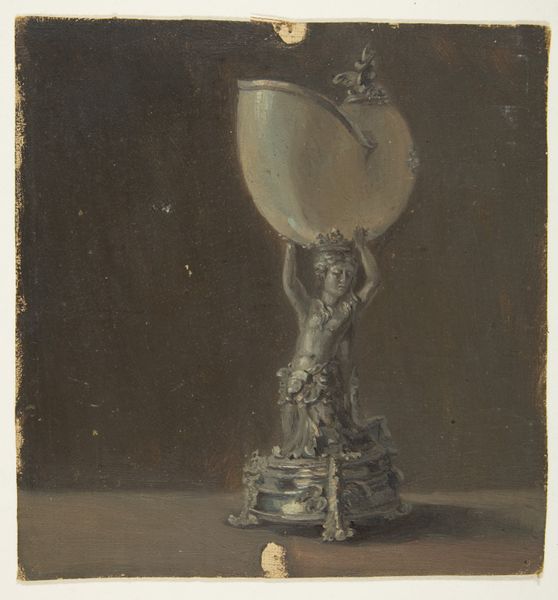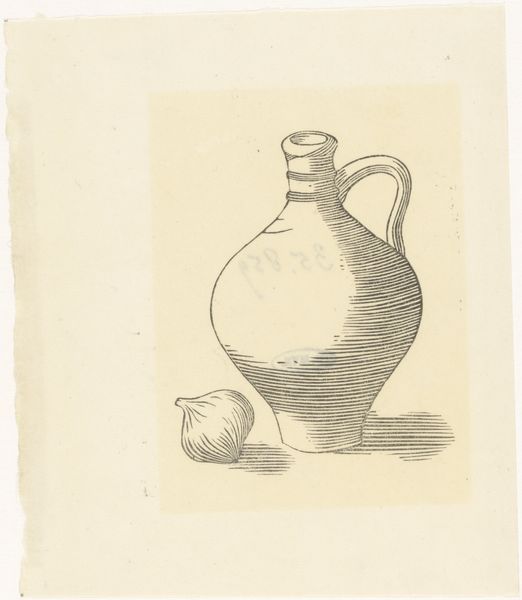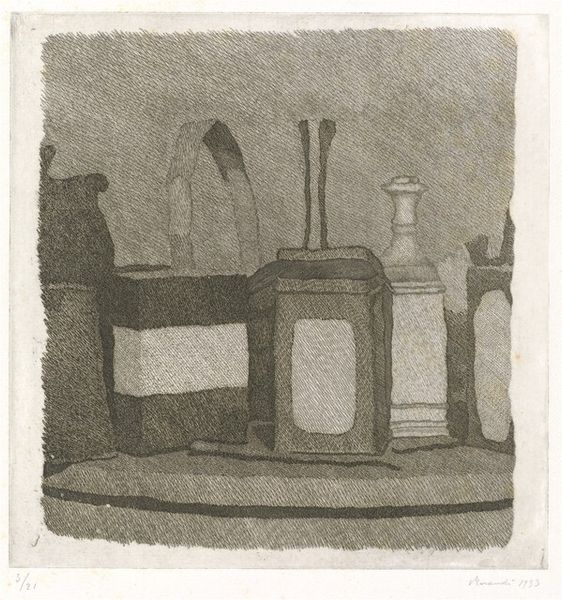
drawing, print, etching, ink
#
drawing
# print
#
etching
#
ink
#
coloured pencil
#
underpainting
#
watercolor
Dimensions: height 230 mm, width 206 mm
Copyright: Rijks Museum: Open Domain
Curator: At first glance, I find this still life incredibly melancholic. It's all muted tones and quiet textures. Editor: Indeed. Here we have Theodorus Antonius de Gruiter's 1922 etching, "Stilleven met boek, wijnglas en lampionplant in gemberpot"—Still Life with Book, Wine Glass, and Lantern Plant in Ginger Pot. De Gruiter masterfully combines line and tone. What cultural context do you perceive behind that feeling? Curator: The grouping certainly leans into established vanitas symbols: a snuffed candle implied perhaps in the wine glass, a closed book suggesting ended stories, even the bittersweet beauty of the lantern plant evokes the passage of time. The ginger pot—does it signify trade, foreign lands? The fleeting exotic? Editor: That’s perceptive. Still life paintings are so fascinating because of the ways ordinary household objects are invested with symbolism that reflected bourgeois desires, fears, and ideologies. This was also a period marked by tremendous loss after the First World War and into the great depression in the early 1920’s. Curator: True, I can sense the visual tension and psychological drama played out across that book's dark cover and within the almost skeletal forms of the lantern plants. It's about absence as much as presence, a certain restraint in its muted palette. Editor: Well observed, restraint might have been a luxury for some, but this suggests an awareness of mortality amid material comforts. These types of works gained a degree of cultural approval since they had a narrative quality while also representing a mastery of the printmaking process. Etchings had a ready market within art collecting circles. Curator: So, more than mere aesthetics; this print provides an opening into the artistic and societal consciousness of the early 20th century. It encourages contemplation on how these intimate settings function as a way to explore deeper existential concerns. Editor: Precisely. A reminder of art's enduring capacity to invite introspection and empathy for an historical past and even shared experience of life and loss across time.
Comments
No comments
Be the first to comment and join the conversation on the ultimate creative platform.
